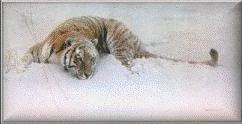
 Facts
Facts

- **66 MILLION FANS CAN'T BE WRONG! CATS ARE KING!
Yes, you knew it! Cats are THE most popular pet in America
(and probably the world.) According to recent figures, there
are more than 66 million pet cats in the United States, as
opposed to about 58 million pet dogs.
The cat population finally exceeded the dog population in
the mid 1980's. This means that nearly 1/3 of American
households is run by at least one cat. Now that's "mew sic"
to my ears! Way to go cat lovers!
- **THAT'S ONE "HIGH" KITTY:
-
In September 1950 a four month old tabby kitten followed a
group of climbers to the top of Matterhorn Mountain in the
Alps; that's an elevation of 14,691 feet!
- **The largest recorded number of kittens born in lifetime of
fertility to a single female cat is 420!
- **It's been calculated that when a cat reaches the age of
nine (in human years) she has been awake for only two of
them. This figure is derived from the fact that the average
house cat sleeps at least 16 hours a day!
- **Cat owners in the United States in an average year are
spending a total of $2.2 billion on cat food and nearly
$300 million on kitty litter.
- ** Would a new kitten make a good companion for an elderly
cat? Maybe not. In their senior years, cats tend to show
low tolerance for any feline additions to the household -
particularly kittens and their pesky demands for attention.
Think twice before disrupting his golden years.
- ** Both humans and cats have identical regions in the brain
responsible for emotion.
- ** A cat's brain is more similar to a man's brain than that of
a dog.
- ** Cats have 30 vertebrae, 5 more than humans have.
- ** A cat's field of vision is about 185 degrees.
- ** Cats have 32 muscles that control the outer ear (compared to
human's 6 muscles each). A cat can rotate its ears independently
180 degrees, and can turn in the direction of sound 10 times
faster than those of the best watchdog.
- ** A cat can jump 5 times as high as it is tall.
- ** Cats step with both left legs, then both right legs when they
walk or run.
- ** In relation to their body size, cats have the largest eyes of
any mammal.
- ** Most cats do not have eyelashes.
- ** A domestic cat can sprint at about 31 miles per hour.
- ** A kitten will typically weigh about 3 ounces at birth.
- ** The typical male housecat will weigh between 7 and 9 pounds,
slightly less for female housecats.
- ** Cats take between 20-40 breaths per minute.
- ** Normal body temperature for a cat is 102 degrees F.
- ** A cat's normal pulse is 140-240 beats per minute, with an
average of 195.
- ** Cat's urine glows under a black light.
- ** Cats lose almost as much fluid in the saliva while grooming
themselves as they do through urination.
- ** Cats do not have a collarbone, so they can fit through any
opening the size of their head.
- ** A cat uses its whiskers to determine if a space is too small to squeeze through. The whiskers act as feelers, helping the cat to judge the precise width of any narrow passage.
- **Elderly cats are prone to stress-related illnesses, so
their owners should try to provide an anxiety-free
environment. Sudden noises, strange smells, even rearranged
furniture in a favorite room are all disruptions of routine.
- **If you have to apply commercial pesticides or fertilizers
to your lawn, make sure to keep your cats indoors for at
least 24 hours afterward. Always check for adverse reactions
such as nausea, tremors, or salivation.
- **A meal or two of white fish (such as scrod, cod, or
haddock) is good for tempting a cat with a poor appetite.
Gently poach the fish or steam it, and remove all bones.
Never serve raw fish to your cat.
- **When choosing a new kitten, look for these signs of good
health: velvety, slightly damp nose; clear, bright eyes;
soft, glossy fur (no bald patches); pale pink mouth and
gums (no bad breath); clean ears; no potbelly.
- **Covered litter boxes are appreciated by timid cats who
like their privacy and also by household members who find
cat boxes objectionable. A variety of covers, from lain
plastic to colorful cardboard "houses" are available at pet
stores and mail-order firms.
- **Did you know that a cat's hearing rates as one of the sharpest
in all of the animal kingdom? Have you wondered why your
cat is always waiting for you at the door to greet you when
you come home? The fact is that your kitties can hear and
recognize your unique footsteps (or the engine of your car)
from hundreds of feet away.
- **Cats have no ability to tastes sweet things.
- **Ailurophobia: fear of cats
Places:
- **Ancient Egyptians (who worshipped felines) shaved off their
eyebrows to mourn the death of a cat.
- **In parts of West Africa, it is still believed that when
people die their souls pass out of their bodies and into
the bodies of cats.
- ENGLISH CAT FACTS:

- ~Tiddles, the ladies room cat at the Paddington Station
in London, weighed 32 pounds and had his own refrigerator.
- ~The Savoy Hotel of London employs "Kaspar," a wooden cat
in dinner dress, to be the 14th guest for parties of 13 -
thus avoiding bad luck.
- ~In Lancashire, England there was a cat named Mickie who
was employed as a mouser for Shepherd and Son, Ltd.
From 1945 to 1968 Mickie was reported to have caught over
22,000 mice!
- WILDCAT FACTS:

- --There is no single cat called a panther. The name is commonly applied to the leopard, but it is also used to refer to puma and the jaguar. A black panther is really a black leopard.
- --Of all the cat breeds, only the cheetah cannot retract
its claws.
- --No two tigers have the same stripes and markings.
- --WHAT DO WORKERS IN THE MANGROVE FORESTS OF WEST BENGAL,
INDIA WEAR TO PROTECT THEMSELVES FROM TIGER ATTACKS?
- Rubber masks tied to the back of their heads - because tigers
are known to attack humans only from behind.
- The mangrove forests of the Sunderbans in West Bengal, India are home
to deadly Bengal tigers, which are easily able to kill a human. Yet
hunters, woodcutters, and honey gatherers often enter these swampy
forests. How do they protect themselves?
- Each person who enters the Sunderbans wears a rubber mask of a human
face on the back of his or her head. The belief is that the tiger
will only attack its prey from behind. If it can see your face, it
will not attack.
- The masks, issued by the government, are part of a larger program
that includes the placement of electrified human dummies and the
construction of freshwater ponds to keep the tigers out of the
rivers, where people are often attacked.
- The Sunderbans is one of the few places where the tiger population is
growing:
http://www.csmonitor.com/durable/1998/02/25/intl/intl.1.html
- A reptilian tiger-equivalent that lived 260 million years ago:
http://features.LearningKingdom.com/fact/archive/1999/02/10.html
 Cat Album
Cat Album
 The Feline Page!
The Feline Page!
 Feline Features
Feline Features


 Facts
Facts



 Cat Album
Cat Album
 The Feline Page!
The Feline Page!
 Feline Features
Feline Features